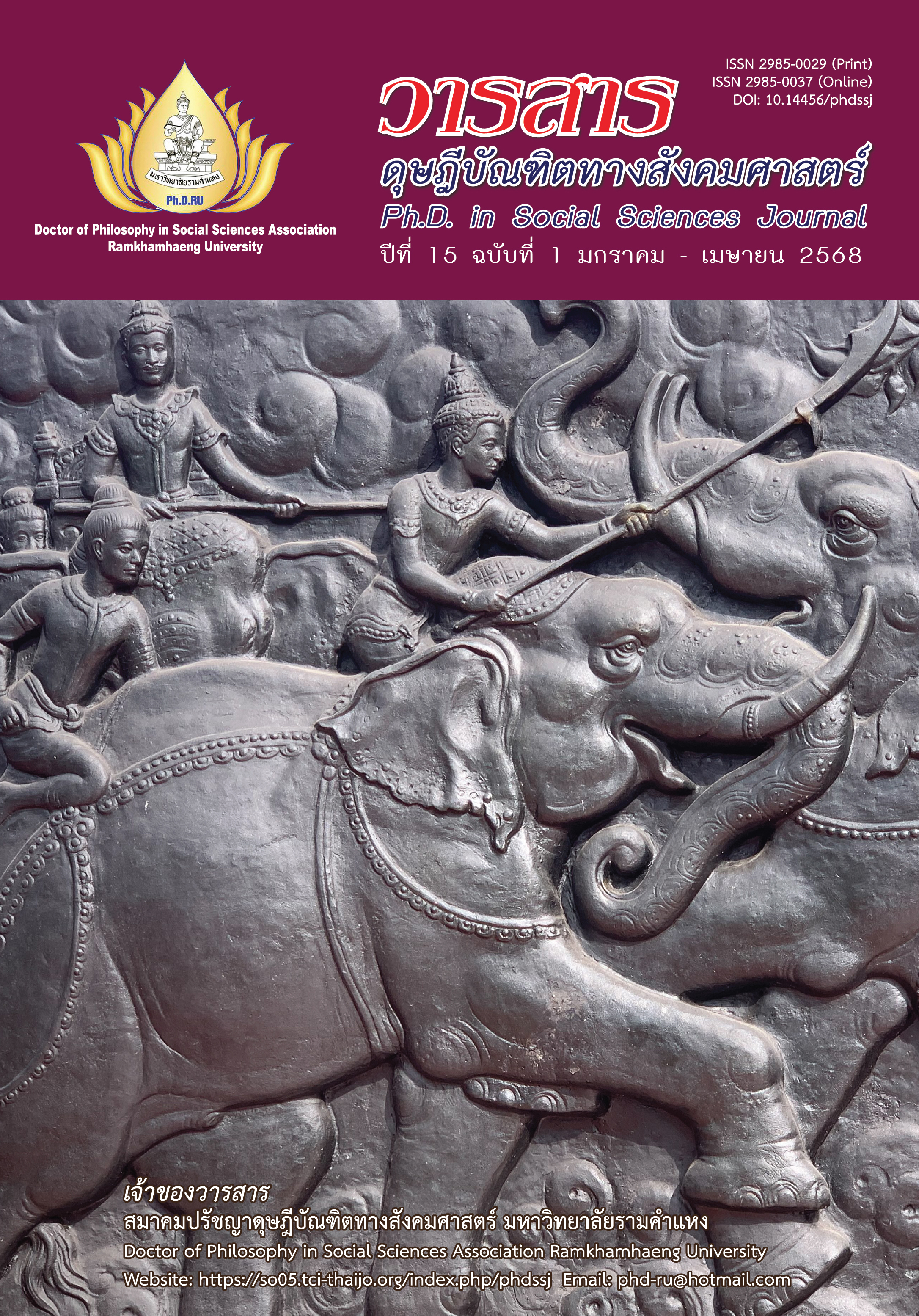Guidelines for Freed Persons for Returning to Society Sustainably
Main Article Content
Abstract
This research article aims to study guidelines for rehabilitation, factors affecting living conditions, and present guidelines for families and society to accept freed persons for returning to society sustainably. This research used qualitative research methods. Group of key informants was 50 people, including (1) correctional officers, 6 people, (2) Community Justice Center Network, 6 people, (3) government and private sectors organizations, 8 people, (4) voluntarily released from prison, 10 people, (5) community leaders, 10 people person (6) Friends of those who have been released from prison, totaling 10 people, using data collection and Descriptive data analysis methods from documents and related research. In-depth interviews and focus groups were used.
Findings are as follows: (1) Guidelines for rehabilitation included the Department of
Corrections training for prisoners according to the curriculum. The Center of Community Justice Network provided assistances and advice on how to live your life Also the private sector must accept and provide opportunities. Those prisoners have been released from prison have a certificate of employment training. (2) Factors affected living conditions. It was found that there are important factors including: measurement following up on released prisoners. Integration of external agencies in solving problems of those released from prison. Continuation of follow-up visits to the homes of those who have been released from prison, of the Community Justice Center Network. Participation in promoting the quality of life of those released from prison in the public and private sectors. A warm family has a job and an income. Accepted by the community
and the government should enact laws that are beneficial to occupations. (3) Presenting guidelines
for families and society to accept freed persons for returning to society sustainably as follows: Family and society must encourage, not repeat, and provide support in every aspect. Going
after the leader who has been exonerated must be sincere. There is funding support for careers. Those released from prison must adjust their behavior to not get involved in illegal things and help the community. Training curricula must be improved to be consistent with the labor market and create awareness. and the government sector should improve the cleansing law.
Article Details

This work is licensed under a Creative Commons Attribution-NonCommercial-NoDerivatives 4.0 International License.
Academic articles, research articles, and book reviews in the Ph.D. in Social Sciences Journal are author’s opinions, and not the publisher’s, and is not the responsibility of the Ph.D. in Social Sciences Journal Philosophy Association, Ramkhamhaeng University. (In the case that research is done on human, the researcher has to be trained in Ethics for Doing Research on Human Training and has to produce the evidence of the training).
References
Carson, E. A., & Sabol, W. J. (2012). Prisoners in 2011. Retrieved from https://bjs.ojp.gov/content/pub/pdf/p11.pdf
Constitution of the Kingdom of Thailand B.E. 2560. (2017). Royal Thai Government Gazette, 134(40 A), 1-90. [In Thai]
Crank, B. R. (2010). Adapting to incarceration: Inmate perceptions of prison life and adjustment. Master’s Thesis of Science (Criminal Justice and Criminology), Georgia State University.
Hansasiripot, B. (2013). Development quality of life index: Happiness. Journal of Politics, Administration and Law, 5(1), 107-129. [In Thai]
Kanjanarat, S. (2001). The relating factors to expectation of life after release. Master’ Thesis of Social Work (Social Welfare Administration and Policy), Thammasat University. [In Thai]
Klinkhae, C., Chaidee, K., Semeinpet, N., Somwong, S., & Suwanno, T. (2020). Factors affecting repeated offending of jail inmates in Mae Hong Son province prison. The Journal of Pacific Institute of Management Science, 6(3), 253-261. [In Thai]
Koehler, A. D. (2019). Exonerated, free, and forgotten: How states continue to punish the wrongfully convicted through procedural hoops and inadequate compensation. Washburn Law Journal, 58, 493-529.
Kotler, P. (2000). Marketing management (10th ed.). Prentice Hall.
Layard, R. (2005). Happiness: Lessons from a new science. Penguin Books.
Lertdhamtewe, P. (2020). Laws related to the foreign business. King Prajadhipok’s Institute. [In Thai]
Malott, M., & Fromader, A. (2010). Male inmate perspective on reducing recidivism rates through post-incarceration resources. Retrieved from https://www.internetjournalofcriminology.com/_files/ugd/b93dd4_2f05e0510796416182e50c73f09e6c54.pdf
Pansri, W. (2003). Social expectation of the prisoners after release: A case study of Chiangrai Central prison. Master’s Thematic of Arts (Social Development Administration). National Institute of Development Administration. [In Thai]
Potter, T. L. (2001). Rehabilitation treatment for inmates of county jails. Master’s Thesis of Science (Vocational Rehabilitation), University of Wisconsin-Stout.
Siwaboworn, B. (1984). After care service in Thailand. Master’s Thesis of Social Work Program, Thammasat University. [In Thai]
Sutam, Y. (2018). A model of participation between community justice centre and Chachoengsao Central prison aiming to returning good citizen back to community. Doctoral Thesis of Philosophy (Management for Development), Rajabhat Rajanagarindra University. [In Thai]
Suwannakit, K. (2002). Woman inmate’ s expectation on life after release: A case study of Central Woman Correctional Institution. Master’s Thesis of Arts (Justice Administration), Thammasat University. [In Thai]
Wongchai, Y. (1976). The role of society in helping freed persons. In Crime and social protection. Thammasat University, Faculty of Social Admistration. [In Thai]


